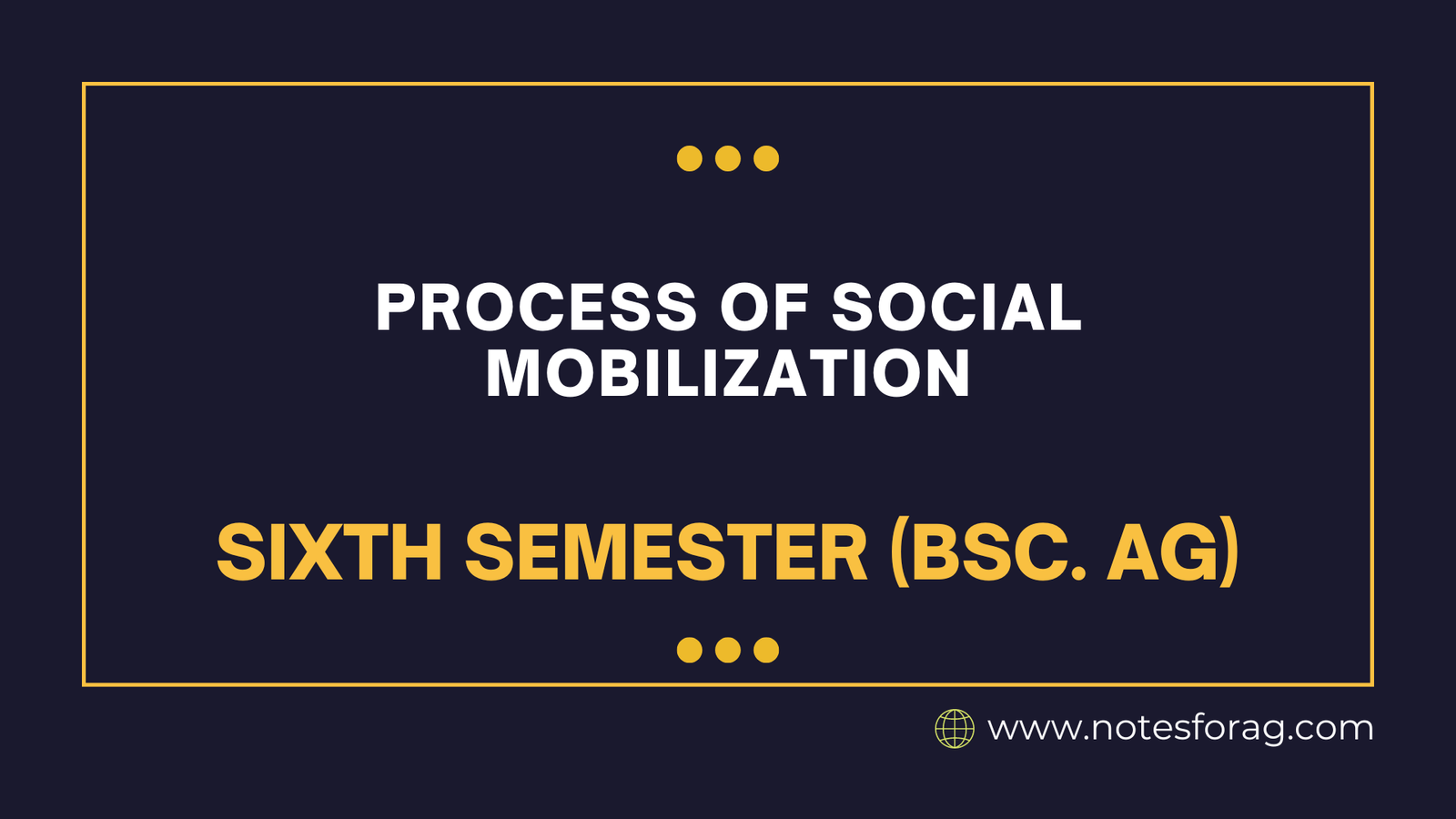The process of social mobilization, institutional development, participatory planning, plan implementation, and sustainable use of results represents a comprehensive framework that ensures community engagement, the establishment of strong institutions, inclusive planning, effective execution, and long-term sustainability of outcomes. This process is especially important in areas like community development, public policy, and social reform.
Table of Contents
Social Mobilization
Social mobilization is the initial step in involving communities and securing collective action towards a common goal. It entails bringing together a variety of stakeholders, including community people, local leaders, government agencies, and non-governmental organisations (NGOs), to raise awareness and encourage engagement.
A fundamental component of social mobilisation is awareness-building, which involves informing people about the difficulties they confront, available resources, and their rights. For example, in rural development, populations may need to be taught about sanitation, healthcare, and the value of education.Another key factor is capacity building, which involves providing individuals with the skills and information necessary to participate in the development process. This ensures that communities may make meaningful decisions and contribute to their execution.
Social mobilization also emphasises community engagement, with a focus on fostering trust and togetherness among participants. Workshops, focus groups, and meetings allow communities to gather, express their needs, and take responsibility of development projects.
Institutional Development
Institutional development aims to improve the capacity of organisations and governance structures in charge of planning, implementing, and maintaining development programmes. This is critical for any initiative’s sustainability since strong institutions ensure that resources are adequately managed and processes are maintained throughout time.
Governance enhancement, which involves reorganising or strengthening organisations or government bodies in order to promote leadership, transparency, and accountability, is a critical component of institutional development. For example, a local government may undergo changes to improve resource management and better answer community needs.
Resource mobilization is also important since institutions require funds, technical expertise, and human resources to support their activities. This may entail forming alliances with external players, such as international organisations, businesses, and civil society.
Finally, capacity building is critical to ensuring that institutions have the skills and knowledge necessary to execute and manage projects successfully. Training programmes for government officials, community leaders, and project managers can help to strengthen the institutional capacity required to oversee long-term development.
Participatory Planning
Participatory planning guarantees that community people and other stakeholders actively participate in decision-making, making development initiatives more inclusive and responsive to local needs. This method ensures that plans reflect the realities and goals of those affected, creating ownership and accountability.
Stakeholder engagement is essential for ensuring that different groups, especially marginalised and vulnerable people, have a say in the planning process. This can be accomplished through public consultations, focus group talks, and town hall gatherings in which residents can voice their wants and objectives. Community members, government authorities, non-governmental organisations (NGOs), and commercial sector actors work together through discourse and consultation to identify issues, prioritise responses, and distribute resources. This promotes a sense of community responsibility and guarantees that plans are based on the actual needs of the people.
The outcome of participatory planning is often a co-created plan, developed through joint decision-making. This plan reflects the input of all stakeholders, ensuring that the community’s aspirations are central to its design.
Implementation of Plans
The next stage after developing plans is to execute them. Implementation entails carrying out the activities described in the participative plans, using the resources gathered during the institutional development phase.
A successful implementation process includes project management and coordination to ensure that all stakeholders carry out their roles and duties effectively. Coordination among government agencies, non-governmental organisations (NGOs), and community members ensures that projects run smoothly, while monitoring and evaluation (M&E) systems aid in tracking progress and making required adjustments.
Effective M&E is crucial throughout the implementation phase because it enables for real-time feedback and the identification of issues that may necessitate strategy adjustments. Regular assessments guarantee that resources are spent efficiently and the project remains on schedule.
Sustainable Utilization of Results
The final stage is to ensure that the project’s outcomes are sustained and deliver long-term benefits. Sustainability is an important factor in development efforts, and this stage ensures that the community and institutions can manage and sustain the advantages achieved.
Institutionalising techniques ensures that successful initiatives are incorporated into local governance structures or policies, so establishing a foundation for future success. For example, if a project improves water management, the local government can incorporate these techniques into its daily operations.
Capacity-building remains crucial because communities and institutions must be able to manage project outcomes on their own. This could include ongoing training, technical support, or the implementation of local maintenance systems.
Finally, long-term impact assessments assist establish whether the project’s advantages will continue to benefit the community. Economic, social, and environmental impact assessments shed light on how the project’s results contribute to long-term development.
To summarise, the process of social mobilisation, institutional development, participatory planning, implementation, and sustainable use guarantees that development projects are inclusive, effective, and long-lasting.
Frequently Asked Questions (FAQs)
What is the social mobilization process?
Social mobilisation is described as coordinated actions and procedures that engage and include all relevant segments of society in order to create an enabling environment for positive behaviour and social change.
What are the stages of mobilization?
Underlying this model are the assumptions that a wave of mass mobilization normally progresses through three main stages: origins, protest, and outcome.
What is the theory of social mobilization?
Social mobilisation is a large-scale initiative that involves and engages people in achieving a certain goal through self-reliant efforts.
Related Articles

